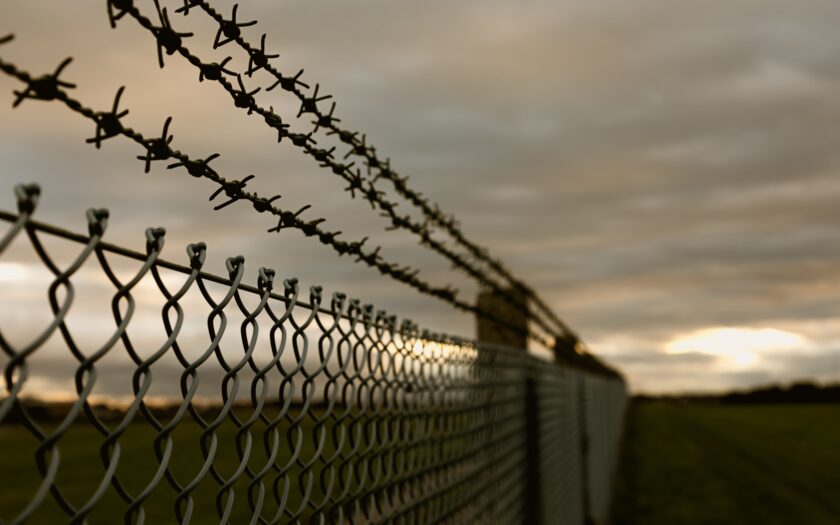Ontario Correctional facilities are essential components of the province’s justice system. Adult offenders are managed through various institutions and programs. The Ministry of the Solicitor General is responsible for managing these facilities, ensuring that the safety and rehabilitation of those in custody are achieved.
Ontario’s jails, detention centres, and correctional centers each perform designated roles. All these facilities are institutions which imprison individuals, mainly after arraignment and awaiting actual judgment.
While incarcerated it is essential for inmates to maintain communication with friends, family and lawyers. FedPhoneLine calling services make communication with incarcerated individuals more economical and accessible. Inmates can remain connected with their support networks.
Comprehensive Guide to Correctional Facilities in Ontario
The Ministry of the Solicitor General oversees all correctional facilities, which fall into three broad categories: jails, detention centres, and correctional centres, each with specific purposes. Jails and detention centres mainly accommodate incarcerated individuals who have been arrested and are awaiting trial, whereas correctional centres focus on offenders serving shorter provincial sentences.
The Ontario correctional facilities focus on security, accountability, and inmate rehabilitation through education, skill-building programs, and mental health support. This structured approach not only enhances public safety but also supports offender reintegration into society.
Communication, in this case, is the most vital aspect of the rehabilitation process; inmates should stay connected to the outside world through communication with friends, family and other support networks. FedPhoneLine offers affordable communication solutions for families to stay connected with their loved ones in all the Ontario Correctional facilities.
Be it personal, legal, or academic requirements, understanding the structure and purpose of correctional facilities in Ontario is necessary. FedPhoneLine and similar resources make the seemingly complex task of navigating the system of Ontario’s correctional institutions easier for both inmates and their families.
Understanding the Role of Ontario Correctional Facilities in the Justice System
Beyond incarceration, correctional facilities in Ontario serve an important purpose: to reduce recidivism. This is achieved by trying to address the root causes of criminal behaviour, such as previous trauma, substance abuse, and mental health issues. Skill development and behavioural improvement programs equip inmates for a productive return to their communities, thus enhancing community safety.
Communication with loved ones helps in rehabilitation. FedPhoneLine provides inexpensive and dependable access to inmates’ families and provides emotional support and stability while incarcerated. An Ontario correctional facility ensures that justice is served while promoting harmony in society and a second chance for an offender by accomplishing both security and rehabilitation.
Major Ontario Correctional Facilities and Their Key Features
Below is a list of some of the major Ontario correctional facilities and their key features:
Toronto South Detention Centre
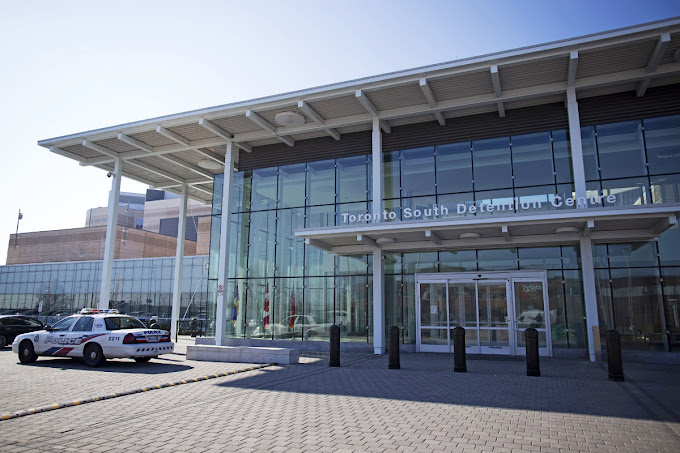
- Location: The Toronto South Detention Centre is situated at 160 Horner Avenue, in the south end of the city. It is close to the Toronto Pearson International Airport.
- Opening: The facility opened in 2014 and was constructed to replace the Don Jail as a modern, high-security institution.
Design & Capacity:
- Modern Facility: TSDC is considered a state-of-the-art, purpose-built facility, designed with a focus on improving conditions for both inmates and staff.
- Capacity: The Toronto South Detention Centre has a maximum security capacity of over 1,650 inmates. It houses both male and female offenders, but the majority of the population consist of male inmates.
Purpose & Functions:
- Detention of Remanded Offenders: The centre primarily holds individuals who are remanded in custody while awaiting trial or other judicial proceedings. It also houses individuals who have been convicted and are serving sentences.
- Security Levels: The facility accommodates a range of security classifications, with a particular emphasis on high-security inmates. However, it also houses lower-security detainees in separate sections.
Design Features:
- Modern Infrastructure: The building was designed with contemporary correctional standards in mind, emphasizing safety, security, and inmate welfare. The design includes advanced surveillance systems, secure perimeter fencing, and segregated living units.
- Improved Conditions: Compared to older jails, the TSDC offers enhanced living conditions. For example, it has individual cells designed to ensure safety and privacy. The facility also provides better access to healthcare, education, and recreational programs.
Notable Information:
- Environmental Considerations: TSDC was also designed with some environmental features, such as energy-efficient lighting and other sustainability features.
- Prison Reform: The Toronto South Detention Centre is part of Ontario’s broader efforts to modernize its correctional facilities, which has included upgrading older jails that were previously overcrowded and not up to modern standards.
Controversy & Criticism:
- Overcrowding: Despite being a new facility, TSDC has faced some challenges, including overcrowding and staffing shortages, similar to many other correctional facilities across the province.
- Inmate Conditions: In some cases, there have been concerns raised by human rights organizations regarding the treatment of inmates, especially those in maximum-security sections or segregation units.
Accessibility:
- Public and Legal Access: The Toronto South Detention Centre is accessible to legal representatives, visitors, and some public services as needed. Legal visits and programs designed for inmate rehabilitation and reintegration are important features of the facility’s function. Click here for visitation information.
Maplehurst Correctional Complex (Milton Jail)
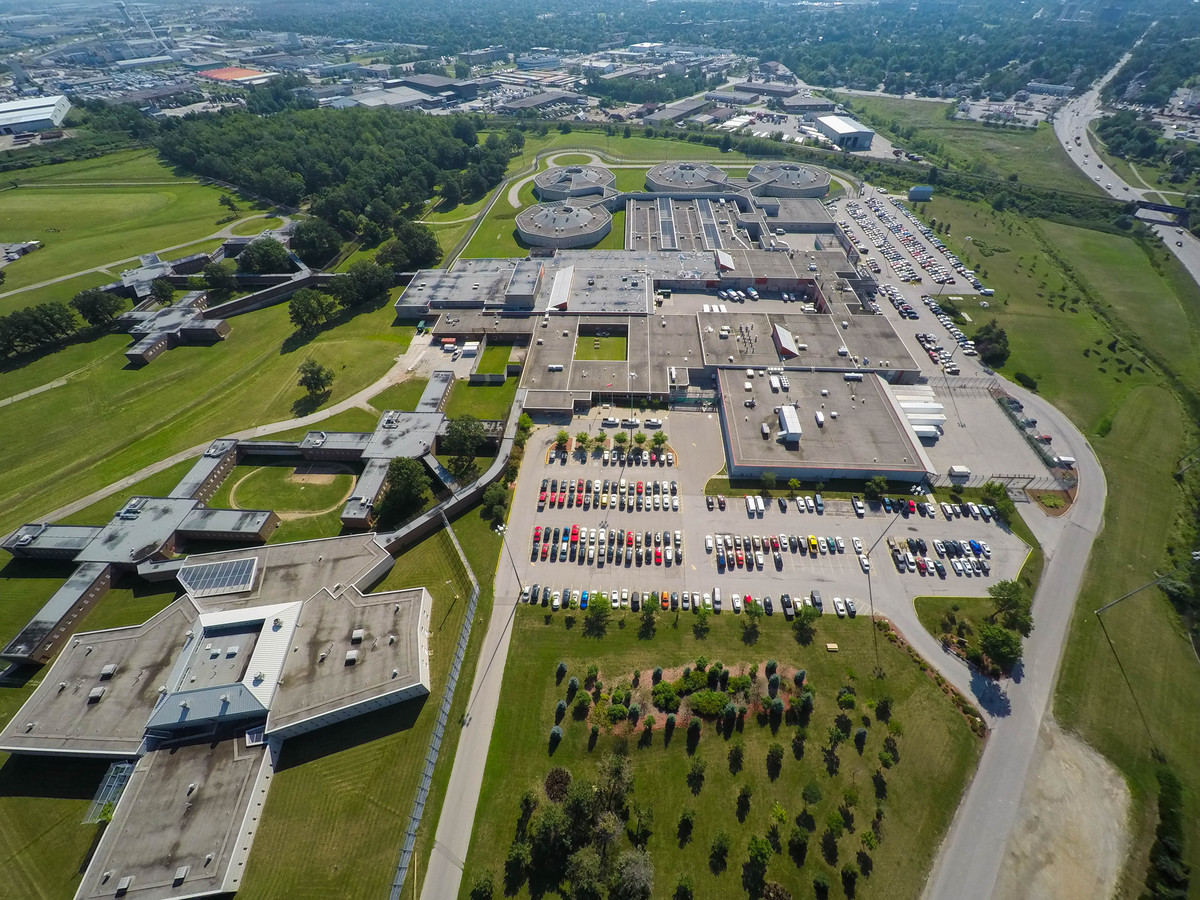
- Location: The Maplehurst Correctional Complex is located at 661 Martin Street, Milton, Ontario. It is situated about 30 minutes west of Toronto, in the Regional Municipality of Halton.
- Opening: The facility first opened in 1977. Over time, it has undergone various renovations and expansions to accommodate changes in the province’s correctional system.
Design & Capacity:
- Capacity: Maplehurst has a large capacity with the ability to house over 1,200 inmates. The facility includes both maximum-security and medium-security areas. It serves as a facility for both remanded individuals (those awaiting trial) and convicted offenders.
- Security Levels: Maplehurst houses inmates of varying security classifications:
- Maximum-security units for high-risk inmates.
- Medium-security units for offenders with lower security needs.
- Segregation units for those who may need to be isolated due to disciplinary or safety reasons.
Purpose & Functions:
- Detention Centre: The Maplehurst Correctional Complex primarily holds individuals who are remanded in custody while awaiting trial or sentencing. It also serves as a facility for inmates serving sentences of less than 2 years.
- Men’s Facility: While there are some female inmates housed in Ontario’s correctional facilities, Maplehurst is primarily a male-inmate facility.
Design Features:
- Modernization and Security: Although originally built in the late 1970s, Maplehurst has undergone modernization efforts over the years. Security features include high fences, barbed wire, surveillance cameras, and controlled access points to monitor inmate and staff interactions.
- Facility Layout: The complex includes several buildings dedicated to different functions, such as housing units, healthcare, kitchen services, and administrative offices. It is designed to separate higher-risk inmates from those who pose less danger.
Programs and Services:
- Rehabilitation Programs: The facility offers various programs designed to aid in the rehabilitation and reintegration of inmates, including:
- Educational programs (high school diploma, GED).
- Vocational training (skills development for employment after release).
- Counselling and substance abuse treatment.
- Life skills and anger management classes.
- Mental health services.
- Health Services: Maplehurst provides access to medical, dental, and mental health care for inmates, with a healthcare team on-site to address the medical needs of the incarcerated population.
Controversies and Criticisms:
- Overcrowding: Like many correctional facilities, Maplehurst has faced overcrowding issues. This can exacerbate problems related to inmate safety, staff workload, and the overall quality of conditions within the facility.
- Conditions in Segregation: Some human rights groups have raised concerns about the treatment of inmates in segregation units and the conditions faced by those who are isolated for extended periods.
- Staffing Issues: Staffing shortages in correctional facilities like Maplehurst have been a persistent issue, leading to concerns about inmate supervision, safety, and the well-being of both inmates and staff.
Maplehurst’s Role in Ontario’s Correctional Facilities:
- Detention and Sentencing: Maplehurst plays a critical role in the province’s correctional system by managing remanded individuals awaiting trial or sentencing, as well as those who are serving provincial sentences (less than 2 years).
- Rehabilitation Focus: Ontario has made efforts to focus more on rehabilitation and rehabilitation-based programs for offenders in facilities like Maplehurst, in order to reduce recidivism and help inmates reintegrate into society post-release.
Accessibility:
- Legal Access: Inmates at Maplehurst have access to legal representatives, and the facility has provisions for legal visits, phone calls, and other communications related to legal matters.
- Visitor Programs: There are strict guidelines for visitors, including family and friends of inmates, who are allowed to visit on specific days under controlled conditions. Click here for visitation information.
Vanier Centre for Women (Milton)

- Location: The Vanier Centre for Women is located at 655 Martin Grove Road, Brampton, Ontario. It is approximately 30 kilometres west of Toronto, situated in the Greater Toronto Area (GTA).
- Opening: The facility opened in 1978, making it one of the longest-running correctional institutions in Ontario that is specifically designed to accommodate women.
Purpose and Functions:
- Women’s Facility: The Vanier Centre for Women is Ontario’s primary facility for female inmates. It serves as both a remand centre (for those awaiting trial or sentencing) and a penal facility for women serving sentences of less than two years (those with sentences of more than two years are sent to federal institutions).
- Security Levels: The Vanier Centre houses women at various security levels:
- Maximum-security units for women who pose a significant risk to others or the institution.
- Medium-security units for women who have lower security needs.
- Minimum-security units and community-release programs for those deemed to be at low risk for reoffending or harm to others.
Design and Capacity:
- Capacity: The Vanier Centre for Women has the capacity to house over 250 women at any given time. The design of the facility provides for separate housing areas, programs, and services catering to the specific needs of incarcerated women.
- Facility Layout: The centre includes multiple buildings and secure units, with separate areas for various levels of security. It is designed to be able to segregate inmates by classification, ensuring that high-risk individuals are separated from those with lower needs.
Inmate Programs and Services:
- Educational Programs: Inmates at Vanier have access to educational opportunities aimed at improving their literacy and academic skills. Some programs include obtaining a high school diploma (GED) or post-secondary education, as well as vocational training.
- Rehabilitation Programs: The facility provides several programs aimed at rehabilitation, such as:
- Substance abuse treatment.
- Mental health services.
- Anger management.
- Parenting and life skills training.
- Sexual abuse and trauma recovery programs.
- Counselling: Vanier offers individual counselling for women facing a variety of issues, including trauma, addiction, mental health challenges, and the reintegration process.
Notable Features:
- Focus on Female Offenders: The Vanier Centre is one of the few correctional facilities in Ontario that focuses exclusively on female offenders, recognizing the unique needs of women in the criminal justice system. It is designed to address issues such as trauma, mental health, and the challenges women face in the criminal justice system.
- Mental Health and Trauma: Many of the women incarcerated at Vanier have histories of mental health issues or have experienced significant trauma (e.g., domestic violence, sexual assault). The centre offers services aimed at supporting these women as they work toward rehabilitation.
Role in Ontario’s Correctional Facilities:
- Rehabilitation Focus: The Vanier Centre for Women plays an important role in Ontario’s overall correctional strategy by focusing on rehabilitation, mental health care, and reintegration programs for women. Ontario’s correctional system has increasingly sought to provide gender-specific programming to address the unique needs of female offenders.
- Community Integration: Vanier has programs that aim to prepare women for successful community reintegration upon their release, including community service programs, work-release programs, and transition planning to help ease the shift back into society.
Accessibility:
- Visitation: The facility allows for visiting hours where family and friends can meet with inmates under monitored conditions. Legal representatives are also permitted to meet with inmates. Click here for visitation information.
Central East Correctional Centre (Lindsay Jail)
 Central East Correctional Centre
Central East Correctional Centre
- Location: The Central East Correctional Centre is located at 210 Henry Street, Lindsay, Ontario, in the City of Kawartha Lakes, approximately 130 kilometres northeast of Toronto.
- Opening: The facility opened in 2001 and is designed to provide a modern correctional environment for inmates in the central and eastern regions of Ontario.
Purpose and Functions:
- Male Inmates: The CECC is a male-only facility that houses inmates of various security classifications, ranging from minimum to maximum security.
- Detention Centre: It functions as a provincial detention centre that holds individuals who are remanded in custody while awaiting trial or other legal proceedings. It also houses inmates serving provincial sentences (those serving sentences of less than two years).
- Security Levels: The facility accommodates different levels of security, with both maximum-security units for high-risk offenders and medium- and minimum-security units for those deemed to be less dangerous.
Design and Capacity:
- Capacity: The Central East Correctional Centre has the capacity to house approximately 1,184 inmates. The design of the facility includes separate housing areas for different security levels and segregated units for specific needs (such as vulnerable inmates or those requiring special management).
- Facility Layout: The CECC is a high-security institution with advanced security features, such as fencing, surveillance cameras, controlled access points, and secure areas designed to ensure safety for both inmates and staff.
Programs and Services:
Rehabilitation Programs: The CECC offers several rehabilitation programs to support inmates in their reintegration into society. These programs may include:
-
- Substance abuse treatment and addiction recovery programs.
- Anger management and life skills programs.
- Educational programs (GED or high school equivalency).
- Vocational training to develop work skills for post-incarceration employment.
- Counselling and Mental Health Services: The facility provides mental health services to inmates, including counselling, psychiatric care, and other psychological support programs to address issues like depression, anxiety, and trauma.
Notable Features:
- Focus on Rehabilitation: Like many correctional facilities in Ontario, the CECC emphasizes rehabilitation and reintegration for inmates. Programs are designed to reduce recidivism by providing inmates with skills and treatment that help them reintegrate successfully into society upon release.
- Security Features: As a maximum-security facility, the CECC employs high-tech security measures, including electronic surveillance and 24-hour monitoring, to ensure the safety of staff, inmates, and visitors.
Role in Ontario’s Correctional Facility:
- Provincial Facility: The Central East Correctional Centre is part of Ontario’s provincial correctional system, serving as a facility for individuals who are serving sentences of less than two years or awaiting trial.
- Community Reintegration: The CECC plays a role in community reintegration programs that aim to prepare offenders for a successful return to society by providing education, job training, and mental health support. This aligns with Ontario’s goal of reducing recidivism rates and supporting rehabilitation.
Accessibility:
- Legal and Family Support: Inmates at the CECC have access to legal resources, and legal representatives are able to meet with their clients in a controlled, secure environment.
- Visitation: The CECC allows inmates to receive visits from family and friends under monitored conditions. Visiting hours are subject to strict protocols for security purposes. Legal visits are also permitted, ensuring that inmates have access to legal representation and assistance. Click here for visitation information.
Central North Correctional Centre (Penetang Jail)
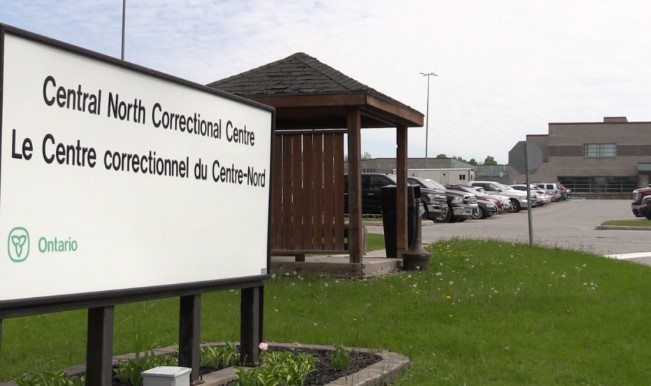
- Location: The CNCC is located at 165 Farlain Lake Road, Penetanguishene, Ontario, which is about 130 kilometres north of Toronto, in the southern part of Georgian Bay.
- Opening: The facility was officially opened in 2001. It was designed to accommodate the growing needs of Ontario’s correctional system, particularly in the central-northern regions of the province.
Purpose and Functions:
- Male Inmates: The CNCC primarily houses male offenders, including those who are remanded in custody (awaiting trial) or serving provincial sentences (less than two years).
- Security Levels: The facility houses a range of security classifications:
- Maximum-security for higher-risk inmates.
- Medium-security for offenders who pose a lower risk.
- Minimum-security for inmates who are deemed low-risk and eligible for certain rehabilitation and work programs.
Design and Capacity:
Capacity: The Central North Correctional Centre has the capacity to hold around 1,184 inmates. The facility has distinct housing areas to separate different security classifications and to manage special needs.
Facility Layout: CNCC is a modern correctional facility with advanced security systems, including surveillance cameras, controlled access points, and secure perimeter fencing to ensure the safety of staff, inmates, and the community.
Programs and Services:
- Rehabilitation and Education: CNCC offers several programs aimed at rehabilitating offenders and preparing them for reintegration into society. These programs include:
- Educational Programs: Inmates may pursue high school education (GED), vocational training, or other academic courses to improve their skills.
- Substance Abuse Treatment: Programs are available to help inmates recover from addiction, including drug and alcohol rehabilitation programs.
- Life Skills: CNCC offers various life skills programs, including anger management, parenting, and other programs designed to help inmates adapt to life outside the facility after their release.
- Mental Health Services: Mental health support, counselling, and psychiatric care are provided to address inmates’ emotional and psychological well-being.
Security Features:
- High-Security Measures: As a maximum-security facility, CNCC is equipped with advanced surveillance technology, perimeter fencing, and secure areas to manage high-risk inmates. Security personnel use sophisticated monitoring systems to ensure the safety of the staff and inmates.
Notable Features:
Focus on Rehabilitation: CNCC is part of Ontario’s correctional strategy, which includes rehabilitating offenders to reduce recidivism rates. The programs offered at CNCC focus on preparing inmates for life after incarceration.
Role in Ontario’s Correctional Facility:
- Provincial Facility: CNCC plays a critical role in Ontario’s provincial correctional system, holding male offenders who are serving sentences of less than two years or awaiting trial. It helps alleviate overcrowding in other facilities while ensuring that inmates are properly classified based on their security needs.
- Reintegration Programs: A key focus of the CNCC is reintegration and providing inmates with the necessary tools and skills to successfully return to society upon their release.
Accessibility:
- Legal Support: Inmates at CNCC have access to legal representation, and their legal teams are allowed to meet with them in a secure and confidential setting.
- Visitation: CNCC allows inmates to receive visits from family members, friends, and legal representatives under controlled conditions. Visitor protocols are in place for security reasons, and visiting hours are usually scheduled in advance. Click here for visitation information.
Ottawa-Carleton Detention Centre (Ottawa Jail)
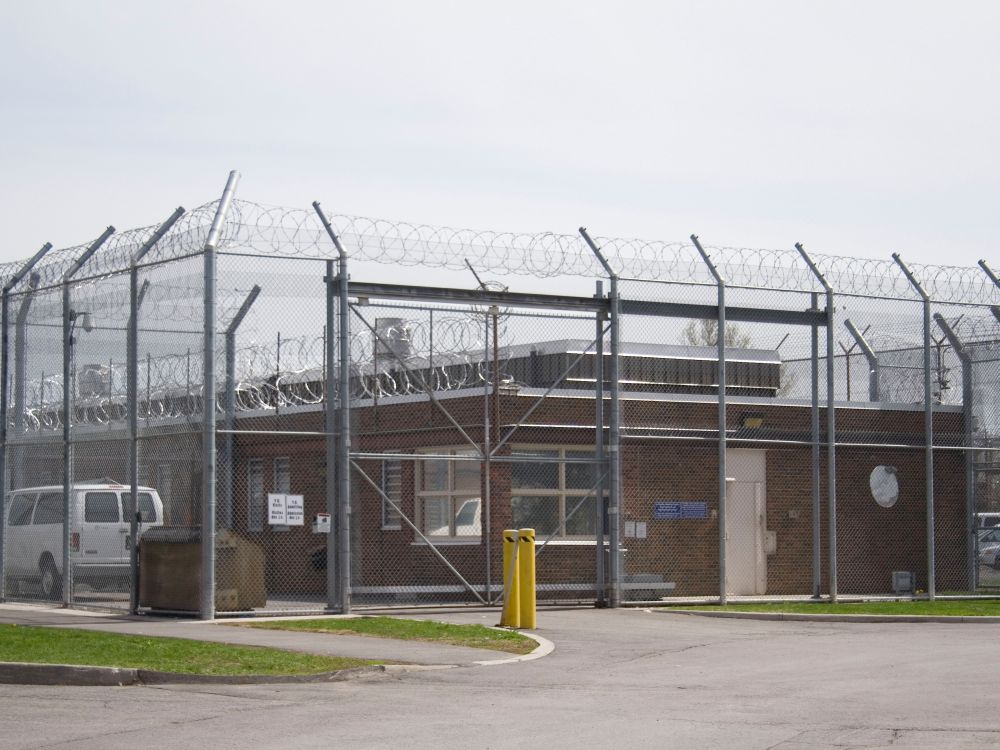
The Ottawa Jail, also known as the Old Ottawa Jail or Carleton County Gaol, is a historic former prison located in Ottawa, Ontario, Canada. The building is one of the city’s oldest and most significant historical landmarks, with a rich and often dark history.
Overview:
- Location: The Ottawa Jail is located at 24 Sussex Drive, directly across from the iconic Parliament Hill in the heart of downtown Ottawa. The location is central and historically significant, being part of the early governance and justice system of Ontario.
- History and Construction: The jail was constructed between 1857 and 1862 as the Carleton County Gaol. It served as both a local jail for the Ottawa area and a larger provincial facility. The building was designed by architect Thomas McGinnis in a Gothic Revival style, which was popular for penal institutions during the mid-19th century.
Function as a Jail:
- Prison Use: The Ottawa Jail was originally intended to house criminal offenders in the Carleton County region. It became known as a maximum-security facility in its time, with a reputation for harsh conditions. The jail housed both male and female prisoners and was used for remand prisoners awaiting trial or those serving sentences.
- Hanging Gallows: One of the most notorious features of the Ottawa Jail was its gallows for public executions. The jail was the site of numerous hangings from the 1860s until 1946, when the last execution was carried out. The execution chamber was located on the top floor of the building, and the hangings were often public events. The presence of the gallows contributed to the jail’s grim and fearsome reputation.
- Conditions: Like many jails of its time, the Ottawa Jail had harsh conditions. The small cells, poor ventilation, and inadequate sanitation made it an unpleasant place for inmates. The jail’s design was based on a Panopticon-style layout, which meant that guards could observe prisoners from a central location. However, the jail’s overcrowding and lack of sufficient care for prisoners made it a symbol of the penal system’s darker aspects during the 19th and early 20th centuries.
Accessibility:
- Legal Support: Inmates at Ottawa jail can have access to legal representation.
- Visitation: Ottawa jail allows inmates to receive visits from family members, friends, and legal representatives under controlled conditions. Visitor protocols are in place for security reasons, and visiting hours are usually scheduled in advance. Click here for visitation information.
Southwest Detention Centre (Windsor Jail)
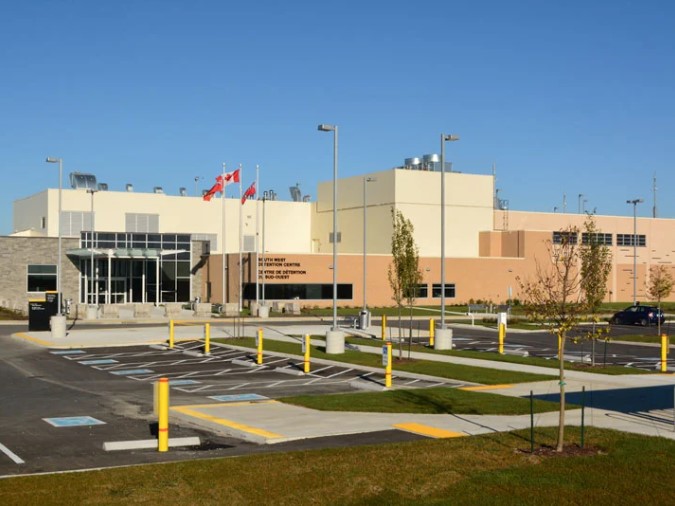
- Location: The Southwest Detention Centre is located at 4819 8th Concession Road, Windsor, Ontario, which is situated in the southwestern region of the province.
- Opening: The facility opened in 2014 and was built to replace the old Windsor Jail (Carleton County Gaol), which had been in operation for nearly 180 years before it was decommissioned in 2008 due to overcrowding and aging infrastructure.
Purpose and Function:
- Provincial Detention Facility: The Southwest Detention Centre is a provincial detention center that primarily houses adult male offenders who are either awaiting trial or serving short-term sentences (less than two years) under provincial jurisdiction.
- Inmate Security Levels: The facility houses inmates at various security levels, ranging from minimum to maximum security. It includes different units for individuals who pose varying levels of risk to the public and the facility itself.
- Remand and Sentencing: It accommodates remand prisoners (those who have not yet been convicted but are awaiting trial) as well as inmates who have been convicted and are serving sentences for crimes within the jurisdiction of Ontario’s provincial system.
Design and Capacity:
- Capacity: The Southwest Detention Centre has a capacity to house approximately 262 inmates. The facility is designed with modern amenities and security features, allowing it to safely manage and house both high- and low-risk offenders.
- State-of-the-Art Facilities: The facility was designed with modern correctional practices in mind, making it a significant upgrade from the older Windsor Jail. It has features like secure cell blocks, classroom spaces for rehabilitation programs, and healthcare facilities.
Security Features:
- Modern Security Design: The Southwest Detention Centre is equipped with advanced security measures to ensure the safety of both staff and inmates. These include:
- Surveillance cameras and electronic monitoring systems.
- Secure fencing and controlled access points.
- Designated units for higher-risk offenders to minimize potential conflicts and ensure the safety of lower-risk inmates.
- Cell Design: The facility features modern cells designed for safety, comfort, and functionality. There are separate areas for higher-security inmates and more low-risk prisoners who require different levels of supervision.
Accessibility:
- Legal Support: Inmates at Ottawa jail can have access to legal representation.
- Visitation: Ottawa jail allows inmates to receive visits from family members, friends, and legal representatives under controlled conditions. Visitor protocols are in place for security reasons, and visiting hours are usually scheduled in advance. Click here for visitation information.
Inmate rehabilitation in Ontario correctional facilities
Rehabilitation is the prime focus in the correctional facilities of Ontario. Offenders are focused on reform as the justice system emphasizes reducing recidivism rates and integrating individuals back into society. Such institutions provide different kinds of programs and services, specific to the needs of inmates, that prepare them for life outside these walls.
Education and vocational training are central to rehabilitation efforts within correctional facilities in Ontario. Inmates can take academic courses, and literacy programs, and obtain trade certifications that improve employability upon release. Counselling and therapy services deal with mental health issues, substance abuse, and anger management, teaching inmates how to cope with healthier mechanisms.
Many correctional facilities in Ontario also implement restorative justice programs, where offenders are encouraged to take responsibility for their actions and make amends. Life skills programs, including financial management and parenting workshops, further prepare inmates for successful reintegration into the community.
Another essential aspect of rehabilitation is proper communication with the family. These relations give emotional stability and support to inmates. FedPhoneLine’s affordable communication option allows inmates of all the Ontario correctional facilities to stay in contact with their families.
Affordable Inmate Communications in Ontario’s Correctional Facilities
Maintaining communication with loved ones is essential for inmates in correctional facilities in Ontario, supporting emotional well-being and rehabilitation. However, the high cost of traditional inmate calling services can create barriers for families. That’s where FedPhoneLine steps in, offering affordable and reliable communication solutions for those with loved ones in all the correctional facilities in Ontario.
FedPhoneLine offers low-cost phone services for inmates and their families, based on specific requirements. Its solutions save on long-distance calling, ensuring families can connect with inmates without spending too much. FedPhoneLine is a no-hassle way to fill the communication gap with easy setup and no hidden fees.
Whether you’re reaching out to someone in a detention centre or correctional centre, FedPhoneLine ensures clear and consistent communication. Their affordable plans are designed with families in mind, making it easier to support loved ones during their time in any of the correctional facilities in Ontario.
Strong family ties play an important role in rehabilitation for the inmate. Availing FedPhoneLine means not just saving money but also helping to build bonds that matter the most. Stay connected today at a manageable price with inmate communication solutions and create a difference in your loved one’s life. Know more at FedPhoneLine.com.

